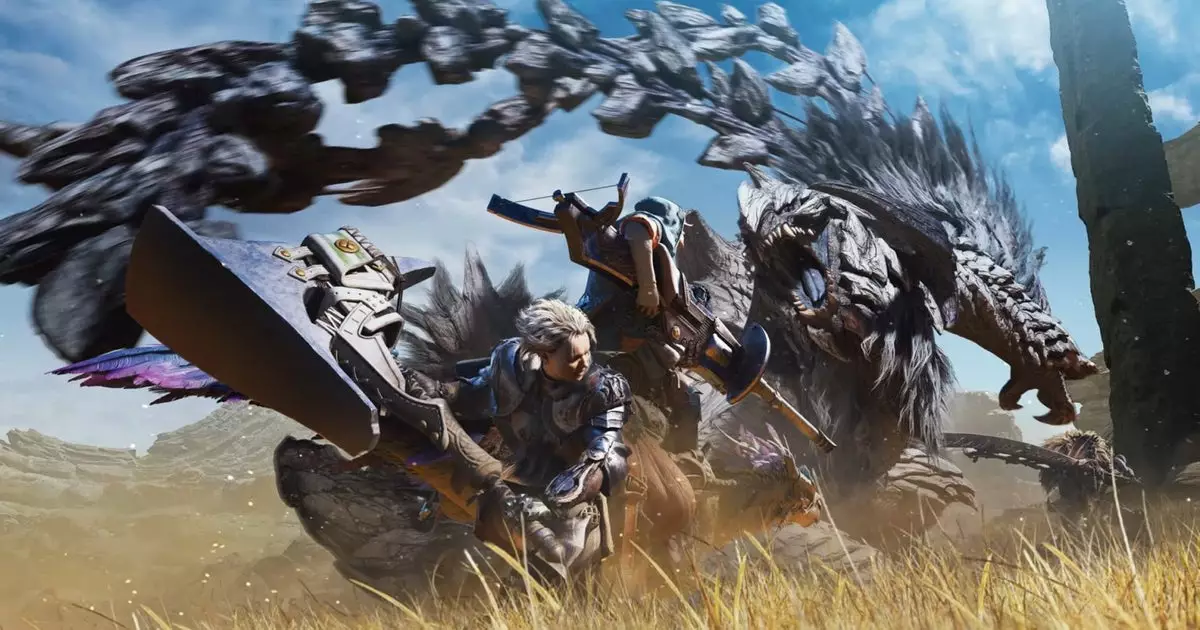In the realm of action role-playing games, few franchises are as beloved as Monster Hunter. With its complex ecosystems and engaging combat, the series continually entices players back to its rich world. The latest iteration, Monster Hunter Wilds, introduces an array of new creatures and components—namely tinctures drawn from wyverns, toads, and arachnids. However, this fresh diversity doesn’t substantially alter the gameplay experience when it comes to weapon types. Rather than offering novel weapon categories, it largely enhances existing tools of destruction with subtle upgrades and refined move sets. The familiar core gameplay elements hark back to iconic releases such as Monster Hunter Freedom 2, revealing how the balance between nostalgia and innovation plays a crucial role in shaping player experiences.
Yuya Tokuda, Wilds’ director, sheds light on the intentions behind the game’s weapon selection. Rather than introducing new weapon categories, the development team has prioritized tweaking the established lineup. “When we start development… we consider whether or not this is the time to add another weapon type,” he explained in a recent interview. The decision not to add a 15th weapon stems not from a lack of creativity but from the challenges associated with integrating a new type that would coexist fluidly with established weapons. With 14 distinct categories of weaponry available—ranging from the straightforward Greatsword to the more complex Hunting Horn—each addition needs careful consideration to ensure it does not overlap with or disrupt existing roles.
Balancing Complexity with Accessibility
When developing a new title, creating complexities within existing weapon types has been a recurring theme. With each release, the team revisits the entire weapon roster to introduce new depth and nuance through additional combos and moves. Tokuda emphasizes the significant time and resources required for such enhancements, suggesting a strategic focus on improving what is already in place rather than diluting the experience by adding new tools. In doing so, Wilds shines a light on the importance of balancing complexity with player accessibility. Capcom appears dedicated to making sure that every weapon feels rewarding to master—an objective met through meticulous iteration rather than mere expansion.
The balancing act continues as the developers navigate which features from the acclaimed Iceborne expansion should carry over to Wilds. Iceborne catered to seasoned players, offering a level of challenge that assumed familiarity with basic combat mechanics. This upward scaling not only catered to the more proficient player base but opened discussions around deepening gameplay complexities. However, it also posed a challenge: how to evolve gameplay in a way that doesn’t alienate newer players or frustrate veterans. This ongoing evolution raises fascinating questions about weapon design in the Monster Hunter universe, suggesting that innovation can also stem from iteration and refinement.
While the conversation around weaponry focuses on improving and rebalancing existing types, it’s interesting to ponder whether there’s untapped potential in new concepts entirely. What if Capcom reimagined their approach to weapon design, fostering a more experimental ethos within their creative teams? By focusing on outlandish ideas—like creating weapons based on peculiar, whimsical creatures or surreal concepts—development could veer into territories yet unexplored. Imagine a wyvern with balloon-like properties or a monster-rendered weapon that’s a geometric delight. Such designs could negate traditional notions of weaponization and usher in an era of mechanical creativity unlike anything seen in prior releases.
While Monster Hunter Wilds may not introduce an array of new weapon types, it reignites interest in the intricate dance of balancing existing mechanics. The beauty of this renewed focus lies in the assurance that depth, creativity, and thoughtful design are as intoxicating as novelty. As players, we are left to ponder not just what we wield but how those weapons have evolved and will continue to evolve in a world teeming with fantastical possibilities.


Leave a Reply